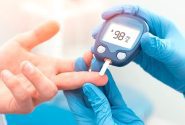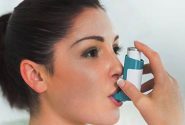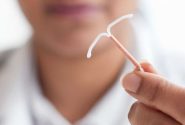(HealthDay News) — (Tasrir) — This guide will explain what MRSA is; how you get it; if it’s contagious; and its main symptoms, precautions and causes. Learn about treatment options, how serious the infection is and what living with MRSA is like.
What is MRSA?
MRSA is a type of staph infection caused by the bacteria called methicillin-resistant Staphylococcus aureus. This bacteria has mutated in such a way that it resists treatment by one of the most widely used classes of antibiotics, known as beta-lactam antibiotics, according to StatPearls.
Staph infection versus MRSA: What’s the difference?
Staph infections are caused by different types of Staphylococcus aureus bacteria, according to the U.S. Centers for Disease Control and Prevention (CDC).
MRSA is a type of Staphylococcus aureus bacteria that is resistant to antibiotic treatment.
How do you get MRSA?
The CDC and the Canadian Center for Occupational Health and Safety say you can get MRSA from:
-
People who are infected
-
Contaminated objects
How is MRSA spread?
Typically, MRSA is spread by skin contact or by touching contaminated objects such as hospital beds, medical equipment or even bed linens. It can also be spread through air droplets if an infected person has lung issues and is coughing, although this is less common.
MRSA causes
You can pick up an MRSA infection either in your community or at a health care facility, such as a hospital. Here’s a look at the main causes of MRSA infection in each of these settings.
Community settings
At home, work and school, MRSA may be caused by:
-
Skin-to-skin contact with someone who has an MRSA skin infection
-
Open wounds that touch an object contaminated with MRSA
-
Sharing personal items of an infected person, like towels and razors
“If you spend time in locker rooms, schools, gyms or even prisons, be very careful to avoid cuts and scrapes, and if you get a skin injury in any of these environments, wash it thoroughly,” Dr. Mark Fisher, director of the Johns Hopkins Burn Center in Baltimore, Md., advised in a hospital article.
Hospitals and other health care settings
While the CDC reports that hospital-acquired MRSA infection rates declined by 17% a year between 2005 and 2013, staph is still one of the leading causes of infections in health care settings.
Here are some causes of health care-acquired MRSA infections:
-
Bedsores, open wounds or invasive medical devices that come in contact with MRSA
-
Touching MSRA-contaminated medical equipment
-
Transfer of MRSA by hospital staff
Is MRSA contagious?
The CDC says that while MRSA is contagious, only about 2% of people carry it, and most of them won’t develop a serious MRSA infection.
MRSA symptoms
What does MRSA look like? You can’t tell if your staph infection is caused by MRSA just by looking at it, according to the CDC. However, the symptoms of a staph infection of the skin can include:
-
Redness
-
Inflammation
-
Pain
-
Fever
-
Seeping pus
Penn Medicine notes that internal MRSA infections are more common in hospitals and other health care facilities. They can cause the following symptoms:
-
Coughing
-
Chest pain
-
Shortness of breath
-
Unhealed wounds
-
Headache
-
Rash
-
Fatigue
MSRA antibiotics
“Many MRSA infections can be treated with oral antibiotics, but some require intravenous medications,” Fisher said.
The following antibiotics may be used to treat MSRA infections, according to StatPearls:
-
Trimethoprim/sulfamethoxazole
-
Tetracyclines
-
Oxazolidinones like linezolid and tedizolid
-
Delafloxacin
-
Intravenous vancomycin
MRSA surgery
Sometimes surgery is performed to help drain MRSA infections. This is a common treatment for staph infections of the skin, according to NYU Langone Health. For deeper wounds, debridement is performed, which removes affected tissue.
For both drains and debridement, local anesthesia is used. If your infection is caused by a medical device, surgery may be performed under general anesthesia to remove it.
Can MRSA kill you?
MRSA can sometimes lead to a serious condition called sepsis, or even death, according to the CDC.
StatPearls notes that MRSA death rates range between 5% and 60%, and are higher among older adults, people with other medical problems, and those in nursing homes.
MRSA precautions
Here are some steps recommended by CCOHS and CDC to help avoid MRSA:
-
Wash your hands regularly with soap and water.
-
Don’t share hygiene items with infected people.
-
Cover any infections with bandages.
-
Clean surfaces regularly with standard disinfectants.
-
Wash bedding and clothing regularly.
-
If you suspect you have an infection, get treatment immediately.
Living with MRSA
Taking all your antibiotic medications as prescribed by your doctor is key when you’re living with MRSA, according to the CDC. It also recommends that you and your housemates follow all the MRSA precautions to help stop the spread of this difficult-to-treat infection while you heal.

